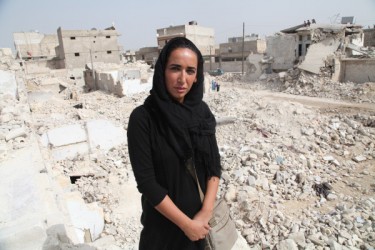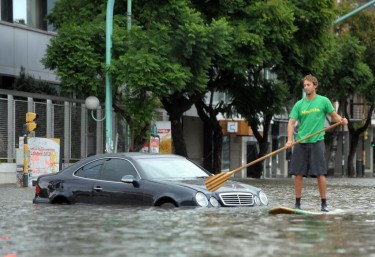Summary of a presentation by Phil Hill and Michael Feldstein.
Phil – there’s so much hype or madness around MOOCs, and
there’s a lot of discussion from people who were not previously involved in
online education. They sometimes act like online education was invented in the
last two years. And they sometimes get terms wrong, like using the terms ‘MOOC’
and ‘online education’ interchangeably.
View of the history of MOOCs:
Most discussion is based around the Stanford branch of
MOOCs, which started in 2011. They are a content distribution from a central
perspective.
All of the MOOCs had the following problems:
-
Revenue models, or becoming self-sustaining
-
How students will get credentials from MOOCs
Michael – the main contribution MOOCs have made thus far is
to reawaken our imagination about what’s possible in online learning. While
students have become very interested in MOOCs, we need to think about what
institutional problem we are solving with MOOCs.
We think of MOOCs as massive, open, online and courses. But
what if they’re not?
Non-massive MOOCs: the number of students could be limited, for
example for reasons of pedagogical quality. In some cases, some part of a MOOC
may be massive while other parts are not. There is (says a commenter) Stanford’s
SPOC (small private online course).
Non-open MOOC: most xMOOCs are not open in the sense that
their content is not provided under Creative Commons. Mostly, ‘open’ means ‘open
access’, meaning anyone can sign up. But that’s not the same as ‘free’.
Non-online MOOCs – the blended model. This is also related
to the concept of ‘classroom flipping’. But there is nothing about MOOCs that
demands that they be offered online.
Non-class MOOCs. They can be communities, like project-based
communities. Like eg. Photo-a-day communities. Or ds106. They are based around
a class, but with ‘drive-by accountants’. Or they can be self-organized, the
way a students self-organized a sequel.
We like to think of them as a continuum, between the little
bits of material an instructor might hand out, all the way up to how much of a
course you can put up online, a range from minimal materials, to courseware, to
full courseware, to a full course.
We think that MOOCs are beginning to span these two
categories, and that the interesting future for MOOCs may be in the ‘courseware’
category. If so viewed, MOOCs as courseware begin to compete more directly with
traditional publisher offerings.
Phil (responding to chat room): where do instructors come
in? Are they interchangeable?
Michael: the answer is yet to be writer; there’s a good
chance it’s a move in the opposite direction. The MOOC is self-sufficient; ‘MOOCs
as courseware’ suggests there’s a definite role for local facilitators. (SD –
aka the Triad model).
Whatever the future of MOOCs, it should be adapted to meet
the needs of the students you’re serving, rather than copying from somewhere else.
We ought not take a factory approach and suggest that we think we know what
they ought to look like.
Phil: MOOCs are reflecting a trend toward a much more
team-based approach to design, and teachers can get involved in that.
Next slide: if we look at where MOOCs are most influential,
their major influence is not from MOOCs in and of themselves. There’s the
suggestion that MOOCs as they are in 2012 is what will replace learning. But
this model is still evolving. There’s a difference between the foreign element –
the MOOC – and the transforming idea, which is what actually creates change.
The xMOOCs in particular are the foreign element that
dismantles the status quos, and what creates a lot of the push-back to the
idea. And we see a lot of resistance to MOOCs in higher ed these days. There’s
a lot of arguing, and a lot of chaos, but change hasn’t started to happen. Our
performance during this period could even be worse than what was traditional.
The transforming idea is when groups begin saying ‘aha’ – if
I apply it this way I will get performance benefits. And then we progress to a
new status quo.
So when we look at how MOOCs are adapting, in a perfect
storm with budgets coming together, people are no longer arguing that online
education cannot work. So the status quo has been disrupted.
But now people are
trying to work them out. But we shouldn’t assume that MOOCs as they are now are
the final model, nor that by applying MOOCs of 2012 we can make everything
better.
What we eventually adopt might not be the original idea that
triggered everything else.
Question: is the MOOC, then, a good vehicle for learning?
Phil: I think it opens up a whole new potential for new
types of learning, eg. Student-to-student learning. But the current design of
MOOCs aren’t necessarily very good for learning.
Michael: it’s a bit like asking whether a poem is a good
vehicle for communication. The answer is: sometimes. The xMOOCs are sonnets,
and the cMOOCs are haiku, and they have very different characteristics.
The CMOOCs have done interesting work in self-organization
and community for learning. The xMOOCs have scaled the lecture hall. Those are
very different approaches. The value that you see in them depends on the value
you see in those goals.
Phil: xMOOCs have really opened up a campus dialogue. I do
think that’s been a big change.

![Firoozeh Mozafari's cartoon for Iranian news website khabaronline, Translation of the words: [Doctor to Patient]: "Sir, please cooperate and get unconscious. We need to do our job!" source: http://khabaronline.ir/detail/282196/comic/cartoon](http://globalvoicesonline.org/wp-content/uploads/2013/03/khabr-285x300.jpg)





